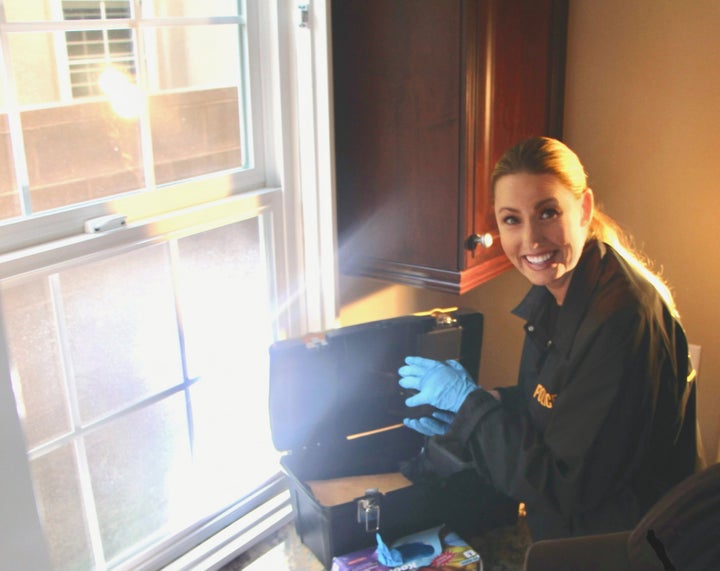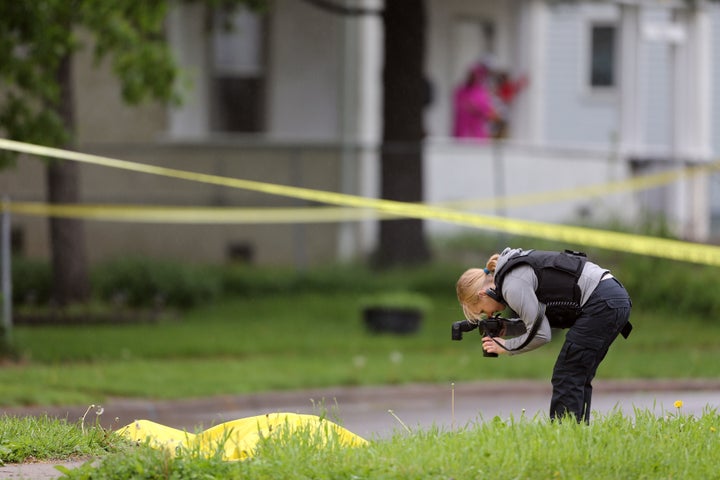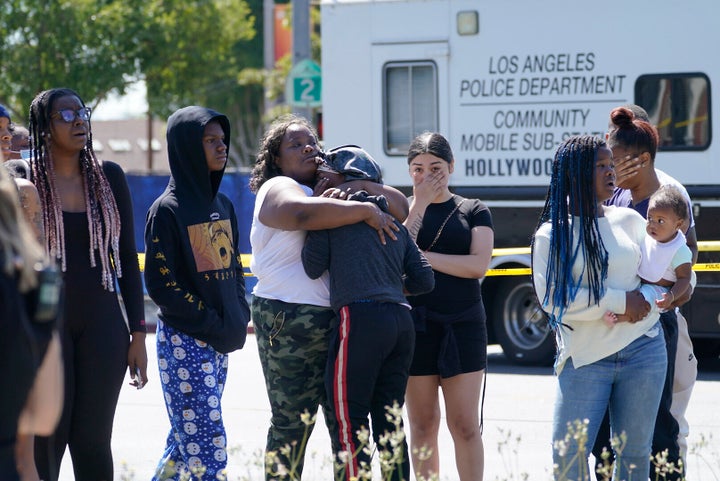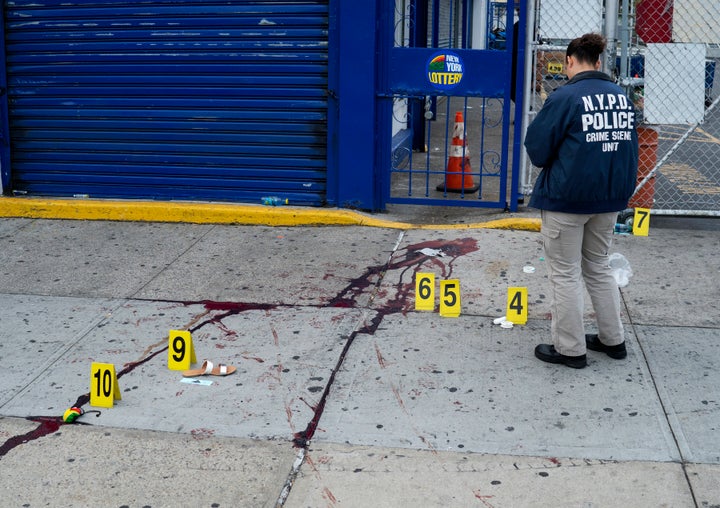What People Don’t Know About Being A Crime Scene Investigator
Most people know by now that the way crime scene investigators are portrayed in TV shows and movies is simplistic and often inaccurate. And glimpses of real-life CSIs in true crime shows and livestreamed trials don’t capture the complexity of their work, its emotional toll, or the fortitude it requires. The stakes couldn’t be higher: The work of the person charged with documenting and collecting evidence could be the difference between someone’s freedom or their incarceration.
But that’s also why people find it to be such a rewarding profession — people like Kimberlee Guluzian, who worked as a crime scene investigator for 23 years and now teaches others in the field. I had the opportunity to ask her about her fascinating career, and get some tips for people interested in pursuing CSI work themselves.
This interview has been edited for clarity and length.

A Crime Scene Investigation, Step By Step
Arrival: For a major crime scene, everyone entering needs to be documented. You have to have a purpose going in there, and it’s not to just go see the deceased. I will typically meet with the homicide team, or there’s usually what we call a briefing. So a deputy or an officer will say, “I was dispatched to this call. I observed a person down through the front window, I forced entry through the front door. I attempted to render aid. I searched the scene for any possible suspects. And then I secured the scene.”
Once we have the briefing, we want to limit the number of people going into the crime scene. So if I was in charge, I would take one homicide investigator or detective with me, and we would do a walkthrough.
Walkthrough: One of my main responsibilities is looking for potential physical evidence. I’m looking for signs of forced entry. I’m looking for any signs of a disturbance, like rummaging through something. If there’s signs of struggle, even a lack of them — a lack of evidence actually can tell me something.
So I’m looking at the totality of that entire crime scene. And as I’m walking through the crime scene, I’m formulating a game plan. How am I going to process this? Do I have a secondary scene? If there was, say, a decedent at the scene but someone was also transported to the hospital with injuries, well, there’s potential physical evidence on that individual. And so I may request another crime scene investigator to go out and do that.
Depending on if the scene is very bloody, then I might put on the Tyvek suit with the booties. At a minimum, I’m wearing a mask — some sort of a dust mask or particulate mask, so I’m not leaving my DNA behind. I’m also wearing gloves.
Initially, I do not touch anything until I take my photographs. Say there’s a victim with a gunshot wound: “Could this be a suicide?” Well, I cannot move the body to see if there is a weapon under the decedent until the coroner investigator gets there. If I do move the body to determine if there is a weapon, I have disturbed the crime scene.
I’m taking notes. And then I will typically exit and grab my camera.

Photographs: Every photograph we take is considered evidence. You don’t want personnel in your photographs if you can avoid it, so I might tell them to hide behind a wall. And so I will take a series of what we call overall photographs of the crime scene.
Then I will place down evidence markers, those yellow tents, to denote evidence. If I were to walk in and drop those evidence markers initially, I’ve already altered the crime scene — that’s not what the crime scene looked like when I was there. I need to take photographs of the crime scene as it is when I arrived.
Finally, I take another series of overall photographs, then mid-range or intermediate, showing the spatial relationship of [pieces of] evidence to each other. The last type of photograph that we’ll take is close-ups, when you’re really trying to show the detail of something.
The number of photos taken depends. You can go to a vehicle burglary and take five. I’ve photographed a homicide scene where there just wasn’t a lot of evidence, and I may have taken 35. And in another case, where it was a murder-suicide, I took 742 photographs. It really depends on how much physical evidence is at the scene.
Sketch: Once photographs are done, we will do a crime scene sketch, taking measurements to be able to reconstruct the crime scene. Imagine looking at something on a wall at 90 degrees: It’s going look different if you stand at 45 degrees — that spatial relationship might look different. Once the sketch and measurements are done, then we can, if necessary, start moving things.
The body: We cannot touch the body until a medical examiner or a coroner investigator is present, because they have authority over the body. We do not have a right to touch them prior to their arrival. So once the coroner investigator’s on scene, they will start manipulating the body, doing their investigation, and at that point of time, we will take photographs of any injuries — but also a lack of injury is important for us to document.
We have a standard set of photographs that we take of the face. We also want to note the hands to know if there are any defensive wounds or if there’s anything significant, like blood underneath a fingernail if the victim was strangled. That could be the suspect’s blood. Then we would process the fingernails for DNA. We’ll photograph the entire body, basically head to toe. And then another set of photographs are taken at autopsy.
How To Pursue A Career As A CSI
A degree isn’t necessarily required. Some agencies will require some sort of specialized training in crime scene investigation, or photography. Photography is critical. It’s one of our major functions when it comes to processing a crime scene. And the typical attention to detail. You have to have pretty strong critical thinking skills and also — it sounds odd, but just common sense. Sometimes it’s great to hire someone that doesn’t have any experience because they may not be coming in with any bad habits.

The Biggest Mistakes A Crime Scene Investigator Can Make
What’s critical when we collect evidence is to ensure we preserve the integrity of that evidence. We don’t want to compromise that. Most TV shows will show a [piece of] evidence in a plastic bag, right? I get it for the viewer — they want to see the item going in there. We rarely package in plastic, because if there’s any moisture, it will trap the moisture and that can degrade the DNA.
In real life, we package in a brown paper bag or a manila envelope, something that is porous. There are a few types of physical evidence that we will package in plastic or an “arson can” — something where we want to test if there’s any sort of an accelerant. We obviously don’t want to put that in a brown paper bag, because then it will evaporate and we can’t test it.
Wearing latex gloves can prevent us from leaving our fingerprints behind. But if they’re a really cheap grade of latex gloves, and we are wearing them for hours, our fingerprints could absorb through the latex gloves. And if we grab an item of evidence, we can leave our fingerprints behind. But just because we try to prevent leaving our fingerprints on evidence that we are collecting, it doesn’t mean that we can aggressively handle or manipulate that evidence, because fingerprints are very fragile.
Cross-contamination is also a huge issue. Imagine I’m done taking all my photographs and everything, and I’m getting ready to collect the evidence. I don a pair of latex gloves and I pick up a sweatshirt and put it in a brown paper bag. And I don’t know if it belongs to a victim or it’s a potential investigative lead — if it’s something the suspect left behind. If I go to the next item of evidence and I don’t change my gloves, I can transfer DNA that way.
I would say that for law enforcement personnel, that’s probably the most common [mistake]. They think, “Oh, I’m wearing gloves, so I’m not leaving my DNA behind, or I’m not leaving my fingerprints.” DNA can be easily transferred.

The Hardest Part Of The Job
I would say [it’s] the emotional toll that this job can take. We are subjected to emotional trauma.
If you’re watching live TV, you might see police officers hold family members back — they won’t let them into the scene. But you’re not hearing them pleading, their cries. To watch a police officer hold a mother back and her pleading, “Just let me kiss my son one last time.” You just don’t have words for it.
I worked a case where an infant died — most likely it was [sudden infant death syndrome]. I photographed the infant at the hospital, and then I went back to the scene with the detectives and the coroner investigator. The coroner investigator asked the grandmother, who found the infant deceased, to take a baby doll and recreate how she found the infant. I don’t have words to describe the grandmother’s deep wails. It was absolutely awful. You have to obviously maintain your professionalism, but you’re also a human.
I can tell someone I’m so sorry for their loss. Usually, I’ll take some time with them before I leave the scene to describe everything that I did and answer any questions that they may have that I’m permitted to answer. When you tell someone “I’m so sorry for your loss,” I am profoundly sad and sorry, but you just kind of feel like those words are just empty at that time.

Some Things You Can’t Prepare For
You can’t pick and choose your calls. Like if there’s a dead body and it’s decomposing — sorry, I don’t mean to be gross — and there are maggots all over the body, you can’t say, “Hmmm, I can’t take this one, I’ll do the next one.” It’s your job. And you have to be able to compartmentalize in a way that you know that like, every body — every physical body that may be at a crime scene — they have loved ones, they have family members, they have friends that are going to be absolutely devastated.
When you look at photographs, you can’t get the sense of the smell, from a decomposing body or blood. Even 10 minutes after death, blood can have a smell, and you just don’t see that in photographs.
The Most Rewarding Part Of The Job
In crime scene investigation, every day is different — you never know what your day is going to hold. You could process five vehicle burglaries, so five cars that were broken into, yet each burglary is different. One of my cases was a murder-suicide of five family members. You just don’t know what your day holds.
One of the most important things for me is that we need to protect the innocent. And those that have committed crimes, hold them accountable, and for public safety reasons, obviously. But our job as a crime scene investigator — we literally hold someone’s liberty, someone’s freedom in our hand, whether we do our investigation properly or improperly, so it’s very, very critical that we’re unbiased in our investigation.
Credit: Source link